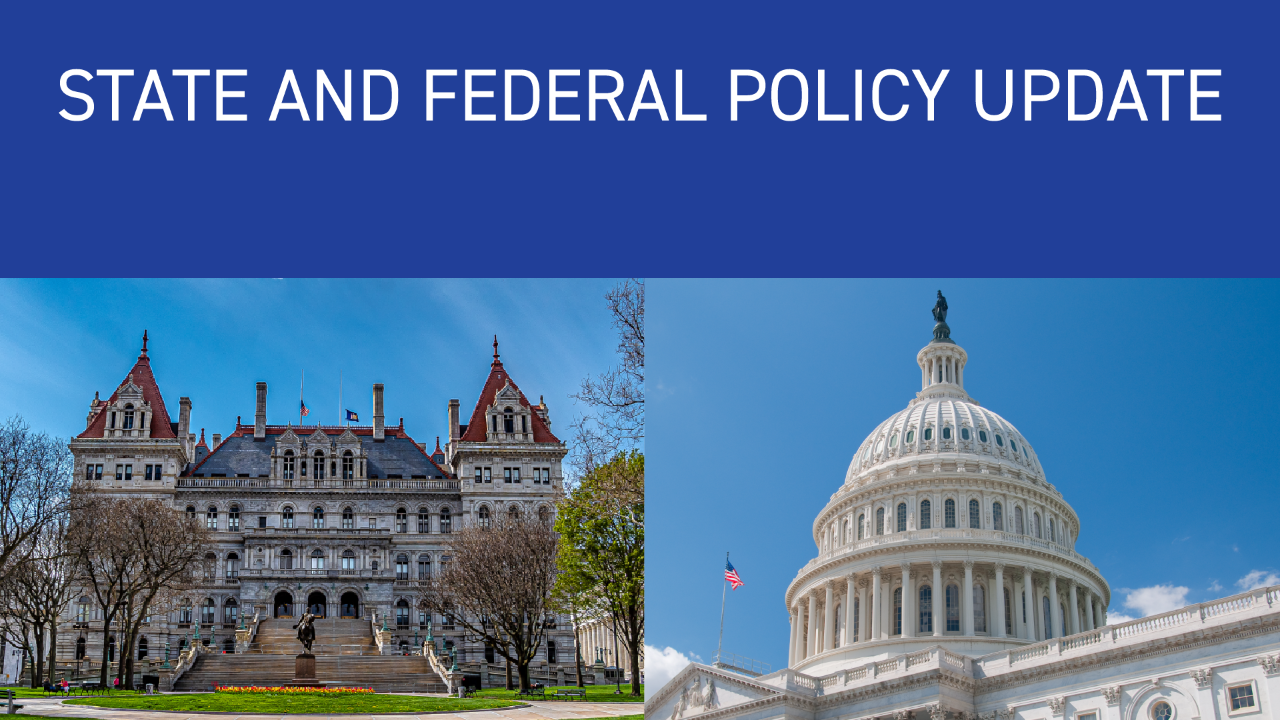State and Federal Update: October 29, 2025
Oct 29, 2025
Federal update
Shutdown approaches one month as impact deepens
As the federal shutdown stretches into a fifth week, its effects are about to reach many more Americans. Among the pending impacts, about 1.3 million active-duty service members are in jeopardy of not receiving a paycheck this coming Friday, October 31. On the same day, the Trump administration says that funding will expire for the Supplemental Nutrition Assistance Program (SNAP), which helps feed 42 million Americans. The administration is declining to draw upon contingency funds to sustain SNAP benefits, arguing that they should be preserved to help respond to national disasters and other emergencies, though this runs counter to previous U.S. Department of Agriculture guidance during shutdowns. The administration also has pledged not to reimburse states that choose to cover SNAP costs in the short term.
Specifically with respect to workforce development, the US Department of Labor has released advance funding for WIOA Adult and Dislocated Worker programs, obligating funds that had been appropriated prior to the shutdown. On a related note, SNAP work requirements that were changed under the party-line budget reconciliation bill signed in July go into effect in early November. Under these new rules, a much wider range of recipients must engage in employment activities, and only recipients with dependent children under age 14 will be exempt. Along with the US Department of Agriculture canceling previous SNAP work requirement waivers and forcing states to reapply, the near-certain result will be higher foot traffic into local one-stop job centers, with greater strain on the limited resources that local workforce areas can bring to bear.
Meanwhile, the shutdown has prompted staffing shortages at the Federal Aviation Administration that led to 7,000 flight delays nationwide on Monday, Oct. 27. More than 13,000 air traffic controllers and 50,000 Transportation Security Administration workers are on the job without pay, and the FAA is short of targeted staffing levels for air traffic controllers by roughly 3,500. Yet even as political pressure to reopen the government grows, Congress remains at an impasse, with Democrats refusing to support a “clean” Continuing Resolution (CR) to temporarily fund the government and Republicans refusing to negotiate.
In New York, Governor Kathy Hochul has pledged over $40 million to ensure that the nearly three million state residents at risk of losing SNAP benefits can continue to access food. The state also has created a new website with information on the impact of the shutdown and the federal cuts under the budget reconciliation bill passed on a party-line vote earlier this year, as well as resources for New Yorkers facing the impact of those cuts.
WIOA reauthorization: reading the tea leaves
Workforce analyst Nick Beadle recently wrote about the prospects for, and the value of, potential reauthorization of federal workforce law in 2025. Much like NYATEP’s own analysis, he notes two conflicting strains of thought from the federal administration:
The Trump Administration has released two very different plans for redoing workforce funding: the Office of Management and Budget’s block grant plan and the Trump workforce blueprint crafted by workforce staff at the Departments of Labor, Commerce, and Education, which is noticeably different.
Beadle adds that neither the block grant approach nor the blueprint seems to have generated much enthusiasm in Congress.
Even as neither idea has caught on, there does not seem to be great enthusiasm to revive last year’s attempt to reauthorize workforce policy—the A Stronger Workforce for America (ASWA) Act, which critics assert did little to address the problems of the current Workforce Innovation and Opportunity Act. Much of the momentum behind ASWA had to do with an idea that reauthorizing the legislation would ensure continuation of funding. The experience of the first nine months of the second Trump administration, however, suggests that the White House does not feel obligated to resource programs that it does not support, regardless of Congressional action.
Between that dynamic and the calendar-driven reality that after the shutdown ends, appropriations are likely to dominate Congress’s agenda through the end of 2025, it is unlikely any major legislation will get traction. As a new year dawns with midterm elections, in which Republicans will be desperate to protect their small House majority and Democrats equally motivated to recapture at least one house of Congress, the prospects for significant compromise and the value of “bipartisan wins” are likely to diminish even further. The probable upshot will be a CR that sustains funding under WIOA, with the bigger questions pushed beyond the midterms.
A personal note
Thanks to everyone who reached out with good thoughts and kind words during my recent health crisis. While I am not yet at 100 percent, I’m plugging back in and happy to answer any questions or share any information I have. Please feel free to reach out at [email protected].

